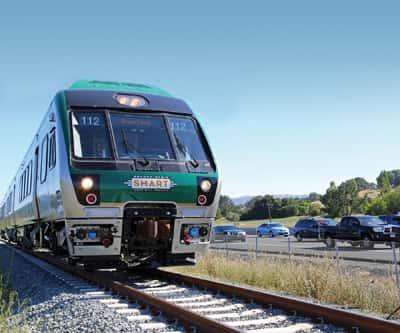Obtaining a sign for your business isn’t difficult. However, getting an effective one—and knowing where to place it—is a bit trickier.
Types of signage
Signs are expanding communication mediums that respond to our mobile lifestyles. Thoughtful use of the visibility features of your business site expands your ability to communicate with passersby. Regardless of the type used, your signage must be appealing to your customers and the message must be readable.
When faced with the task of reviewing the many choices of signs available, it helps to first look at the three primary locations in which you’ll typically use on-premise signs. Primarily, there are building-mounted, freestanding and interior signs. Carefully reviewing the many types of signs within these categories and considering how well they’ll meet your location and business’ needs, will help you select the kind of signs you need for your greatest business success.
Building-mounted signs may be attached to the roof, parapet, marquee or building fascia. These signs may be either parallel or perpendicular to the building surface.
Freestanding signs are generally supported by a structure attached to or cast in a foundation. The structure and attachments to the foundation may be concealed with a decorative covering. Freestanding signs can be further enhanced by landscaping.
On-premise signs can be either internally or externally illuminated. For retail businesses, on-premise signs should be illuminated to accomplish communication with potential customers during nighttime hours.
Sometimes a building itself functions as a sign. This occurs most often with franchise and chain retail operations, where standardized (or “signature”) buildings and colors, as well as traditional on-premise signage, announce the presence of the business. Buildings also may be fitted or retrofitted with “trade dress” to design a theme. Retrofitting of a building-façade is often described as a “face lift.” Both building and freestanding signs should be designed to echo the theme or trade dress.
Changeable copy boards or electronic message centers enhance a sign’s effectiveness by providing space to advertise time-sensitive messages. Such sign or sign additions can be electronically controlled (the electronic message center) or changed manually (the changeable copy sign).
Interior signs are those that advertise the location of businesses located in a common building such as a mall, office building or entertainment complex. They have two major purposes: to influence buyer choices and encourage certain “point of purchase” transactions, and to provide guidance in a safe and efficient manner, as required by local regulatory authorities (such as the fire marshall) and federal law, particularly the Americans with Disabilities Act (ADA).
The value of signage
There’s an old axiom that the three keys to successfully selecting real estate are “location, location, location.” In much the same vein, the three keys to successful selection and development of commercial properties are visibility, accessibility and parking.
An effective on-premise sign is a critical component of visibility and should receive the same careful attention as each of the other components. Without a properly designed and placed on-premise business sign, a commercial site cannot function at its full economic potential. An effective on-premise sign develops a memory for a location and the products or services available at the location; it reinforces a memory and extends recall of other advertising efforts; it attracts new customers by prompting first-time or impulse visits or purchases; and it modifies customary purchase decisions or habits. Changeable copy and temporary window signs are especially effective in encouraging variation from accustomed consumption patterns.
Branding a site
One measure of how effective or valuable an on-premise sign is to its site is demonstrated by how well it helps brand the site. A sign brands a location, just as a product label brands a product. If an attractive image isn’t communicated by the business’ sign, the business will rarely convey its true message—or get the clientele it seeks.
Every site development and sign program strategy will benefit if the on-premise sign is made the focal point of the site. If a site is “signcentric,” it means the sign catches the customer’s attention and leads that person to the target business. A measurable positive effect on gross revenues should immediately result from signcentric site development.
Modifying customary purchase habits
One of the primary goals of advertising is to change purchase behaviors. Effective advertising can increase purchases within discrete segments of the market by introducing “intervening opportunities” along customary travel paths. This is especially true in highly discretionary areas, such as quick service foods and economy lodging, yet it holds true, also, for the business with more specialized products or services to offer.
The right sign often prompts an unplanned stop or changes the customer’s mind once he or she is on the premises. Changeable copy and temporary window signs are especially effective in encouraging variation from accustomed consumption patterns. Because temporary or variable message signage is relatively inexpensive, the dollars generated by such signage usually represent pure profit.
It’s estimated that 35 to 50 percent of the consumer population today shops outside their local area. Legible, conspicuous on-premise signage will assist in attracting a large percentage of these nonlocal and newcomer consumers. Further, an effective on-premise sign provides 24-hour exposure of its message to a large pool of potential customers at a fraction of the cost (when depreciated over several years) of other media. The lower the cost to obtain customer memory or top-of-mind awareness, the higher the return on advertising dollars.



